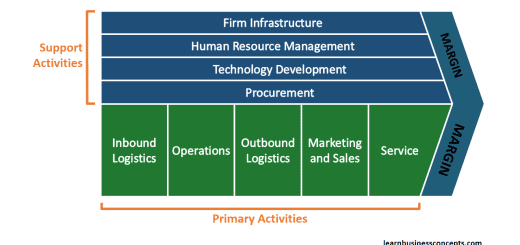Advantages and Disadvantages of Horizontal Integration
Horizontal Integration is where two companies in the same industry merge to create a combined entity. Horizontal integration occurs within the same industry so that the entities involved can enhance their competencies together.
The company can proceed with Horizontal Integration in a form of mergers and acquisitions. Simply this means that the competitor companies in the same industry get together to achieve economies of scale and higher market share.
Following are the Advantages and Disadvantages of Horizontal Integration
Advantages (Pros / Positives / Benefits) of Horizontal Integration
1) Enhance the Competitive Advantage
Horizontal integration improves the market share and costs synergies. This results in the improvement of competitive advantage for the company over their competitors. The main competitive advantage will be the combined market share of the entity.
2) Larger Customer Base
Merging two companies in similar industries results in a larger customer base for the combined entity. This is one of the major advantages of horizontal integration.
3) Create Economies of Scale
When two competitors in the same industry merge together, the combined entity will experience cost decreases along with an increase in its level of output. Simply the cost per unit of an individual item decreases when increasing the scale of production. This economy of scale concept relates to operational efficiencies and synergies as a result of an increase in the level of production.
4) Expand the Market Share
The horizontal integration strategy will eventually help to boose the market share due to the synergies realized from the combined entity. Both company’s market share will be summed up and it is easy for the company to improve this further.
5) Easier for International Establishment
Rather than starting the company in a foreign country, it is beneficial to acquire or partner with a homegrown company. This will help the parent company in various ways to establish quickly and generate profits.
Disadvantages (Cons / Negatives / Drawbacks / Risks) of Horizontal Integration
1) Regulatory Issues
Regulators concern if corporates trying to reach a monopolistic business.
Antitrust laws prevent big corporations from mergers and acquisitions that would narrow the competitive market and possibly create a monopoly. This is the main disadvantage or challenge for horizontal integration.
2) Risk of Diseconomies of Scale
Diseconomies of scale are which the company experiences an increase in average unit cost when the production output increases. The production process starts to become less efficient after a specific point in production output. There is a risk of diseconomies of scale after horizontal integration from the expansion of the businesses.
3) Failure on Synergies Realization
Horizontal integration requires a significant level of synergies between the two companies. In certain situations, these synergies could be realized practically. This is the one of major risks and disadvantages of horizontal integration.
4) Employee Issues
There could be unforeseen employee-related concerns that occur after horizontal integration. There could be management decisions for the lay-off of existing employees. Certain pressures from union associations can arise unexpectedly.
5) Significant Capital Requirements
Horizontal integration requires considerable financial capacity. The main financial requirement is to acquire or merge with the company in a similar industry. Also, there will be cost implicated after the integration to optimize the business operations.
Recommended Articles:


